Last Friday, I visited La Jolla Fine Jewelry in downtown Chelsea to get a few pictures of their jewelry-making process for an upcoming feature in the Standard.
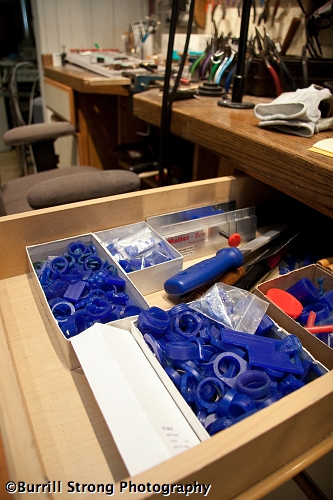
No, La Jolla doesn’t sell strange blue rings. These are the wax forms used to design the rings and cast the molds.
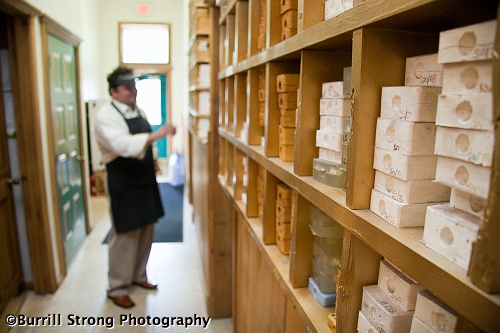
Owner Curtis Gough looks over some of the molds he’s accumulated over the years.
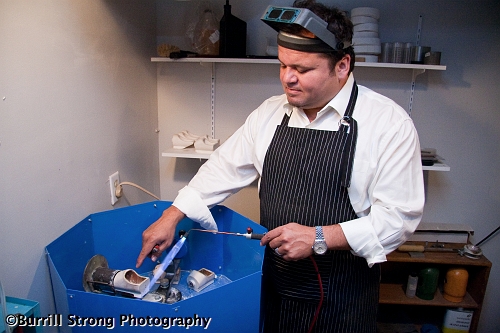
“…And then I put the marshmallow in there and heat it until it’s ready for a tasty s’more.” (Seriously: he uses the torch to melt the metal of choice in the Gravy Boat of Doom — well, maybe I can’t remember its real name, okay? — and then he spins the whole thing around like a playground merry-go-round to force the metal into the mold to create the jewelry. Hooray, physics!)

Stephen Kolokithas isn’t mixing a drink; he’s mixing the mold material. You don’t want to drink that material unless you want a mold of your esophagus. (You don’t want that. You really, really don’t.)
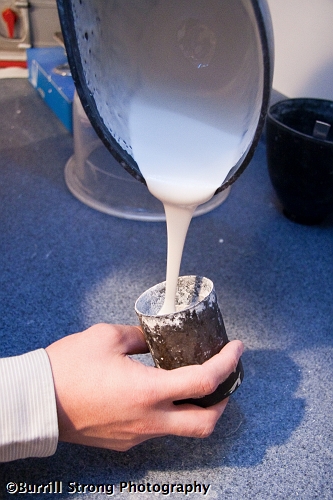
That’s DEFINITELY not pancake batter.
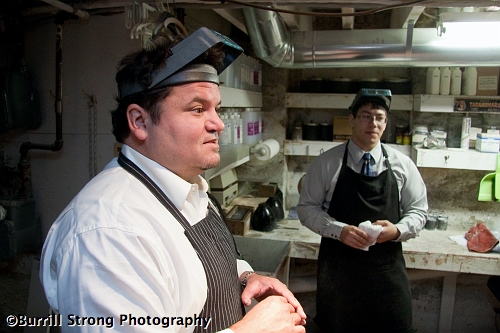
Do they ever take off those magnifying visors? My sources say no. In fact, I suspect the best jewelers are born with magnifying visors on their heads.
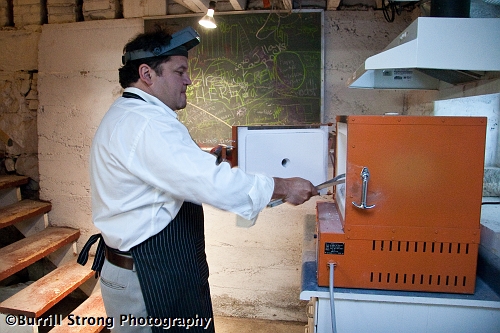
When his employees get hungry, Curtis bakes a batch of tasty cookies in La Jolla’s oven. (Actually, he’s putting a mold into the oven; about an hour later, he’ll take it out, and it’ll be baked solid, but not tasty. Then he can pair it with the Gravy Boat of Doom.)

Curtis still works with his mother, Gloria; however, Gloria doesn’t enjoy being in front of a camera, so I had to settle for getting a photo of a photo.
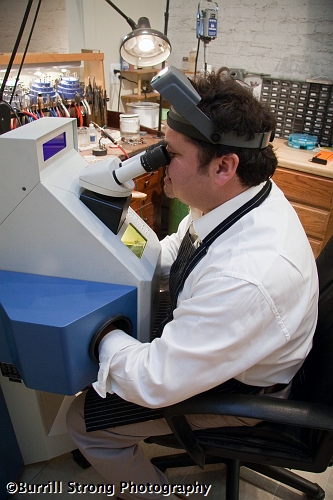
Okay, so this is just plain cool: Curtis has a laser welder to help him with his very precise work. He told us the welding beam is thinner than a human hair, which makes it somewhere around the width of the average supermodel. I know it’s hard to imagine, but it’s true! (The part about the beam, not the part about the average supermodel. Science still has no way to measure the thickness of the average supermodel.)
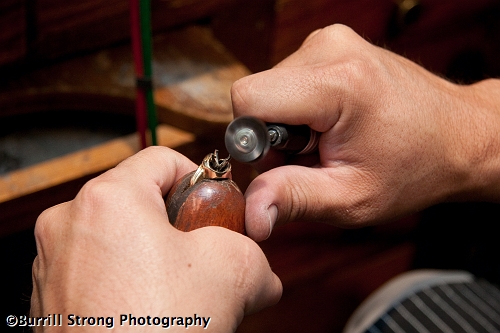
Though the laser welder is cool, the craft of a jeweler still requires low-tech hands-on work; here, Curtis is grinding down the prongs before he mounts the jewel.
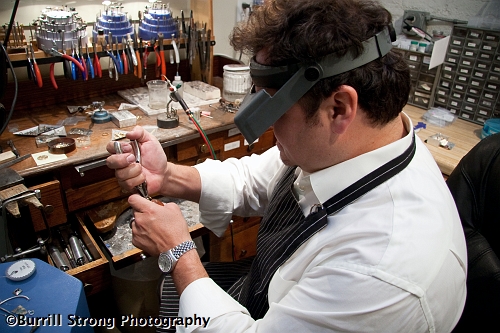
A jeweler’s workbench, Curtis told us, should always be a bit of a mess; that means he’s busy. (Does that mean my messy desk is a good sign, too? No, probably not.) Here, Curtis is busy forming the prongs around the jewel.
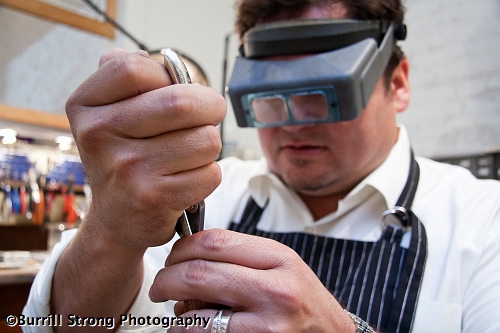
When I showed Curtis one of the pictures I’d taken, he glanced at the screen, decided the image was too small, and flipped down his magnifying visor to get a better look. (That’s not what he’s doing here; he’s still seating the jewel in the mount. This just happened to be the best opportunity to tell that story.)

This is a glimpse inside the outrageously cool laser welder. The jewel is now mounted on the ring, and Curtis is using the welder to secure the diamond to the prongs.
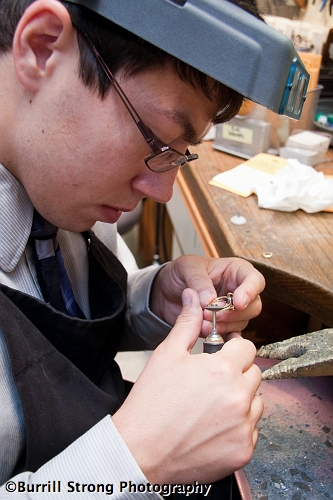
What, you think it’s just automatically shiny and pretty when it comes out of the mold? Of course not! Stephen would never let a piece of jewelry go out the door without the proper finishing work.
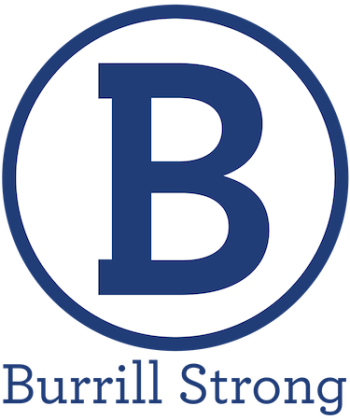
Cool! I remember the blue wax molds from when I got to design my wedding ring. It was wierd putting on a blue wax ring.
I like. Cool picture-story. Next time ask for free samples for your sister.
Super cool! I had no idea how jewelry was made…now I do….and actually feel smarter. I usually go through the day with all these baby/kid toys around me and feel like my IQ dropped by the end of the day…so thanks!